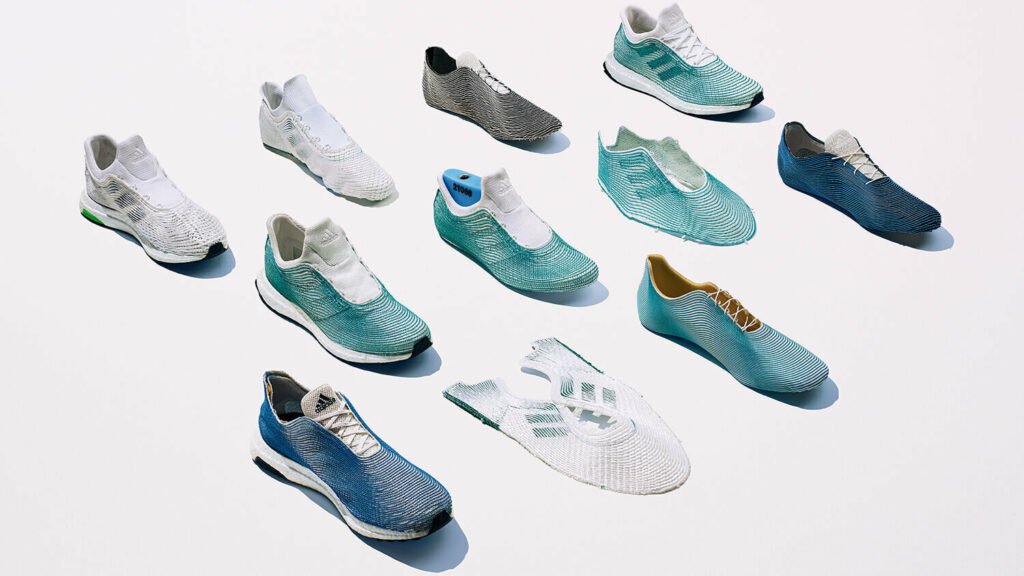THE FABRIC OF THE FUTURE: HOW TECHNOLOGY IS WEAVING INTO RETAIL
As we thread our way into a new age of retail, it’s evident that technology isn’t just influencing how we shop, but also what we wear and how it’s produced. This transformative impact has retail fabrics and supply chains undergoing a revolution, ensuring sustainability, efficiency, and smarter production. Let’s unravel the story of how tech is interlacing with the very fabric of the retail industry.
SMART FABRICS AND WEARABLES
Gone are the days when fabrics were simply utilised for aesthetics and comfort. Today, they can be embedded with sensors, lighting, or even tiny circuits to make them ‘smart’. These fabrics can monitor health metrics, adjust according to temperatures, or even change colours based on the environment.

Levi’s® Trucker Jacket | Image source: Jacquard
Levi’s partnered with Google’s Project Jacquard to produce a denim jacket that, with a swipe or tap on its sleeve, can control a smartphone. This tech-woven jacket is a testament to the potential of smart fabrics.
SUSTAINABLE PRODUCTION WITH TECH
With environmental concerns becoming paramount, technology aids in developing fabrics from sustainable sources or through processes that reduce waste and conserve resources.

Concept Shoe for Adidas x Parley | Image Source: Adidas X Parley
Adidas, in collaboration with Parley for the Oceans, introduced shoes made from recycled ocean plastic – showcasing one of the many ways advanced tech can be used to convert excess material and waste into high-performance wear.
3D PRINTING IN FABRIC PRODUCTION
3D printing is no longer confined to rigid materials. New advancements allow the creation of flexible materials, offering innovative ways to produce clothing and accessories, reducing waste in the process.

3D Printed Fabrics | Image Source: Julia Daviy
Designer Julia Daviy showcased an entire collection created using 3D printing at New York Fashion Week, highlighting the potential of this technology in bespoke fashion and sustainability.
BLOCKCHAIN IN THE SUPPLY CHAIN
Transparency and traceability are key for modern consumers. Thanks to technological advancements, retailers are integrating blockchain technology to provide a transparent journey of the product, from raw material sourcing to the finished product. Fashion brand Stella McCartney partnered with the blockchain platform Provenance, allowing customers to trace the life-cycle of their purchased items, ensuring ethical and sustainable practices.
AI AND PREDICTIVE ANALYSIS IN SUPPLY CHAIN
Artificial Intelligence (AI) offers unprecedented forecasting accuracy for demand, helping brands produce just the right amount, minimizing overproduction and wastage. H&M, a retail giant, has been leveraging AI to analyze store receipts, returns, and loyalty card data to better align supply with demand, ensuring stores receive stock tailored to localized sales patterns.

Robotic Sorting Solution at ASOS’s Eurohub 2 Warehouse | Image source: DeliveryX
ROBOTIC PROCESS AUTOMATION (RPA) IN WAREHOUSING
Efficiency in the supply chain isn’t just about production but also storage. Robots, powered by AI, ensure quicker sorting, storing, and shipping of goods in warehouses. ASOS’s ‘Eurohub 2’ warehouse uses robots that can process and package 4,000 orders per hour, demonstrating the next level of efficiency in the supply chain.
As technology threads its way into the fabric of retail, we witness an industry transformation that promises sustainability, innovation, and efficiency at every stage. Retailers are understanding that tech integration isn’t just a trend but a necessity, weaving a future where the retail supply chain is as advanced as the products it creates. In this tapestry of change, those who adapt and innovate are set to be the trendsetters of tomorrow.

